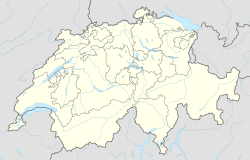
Fuldera is a village in the Val Müstair municipality in the district of Inn in the Swiss canton of Graubünden. In 2009 Fuldera merged with Lü, Müstair, Santa Maria Val Müstair, Tschierv and Valchava to form the municipality of Val Müstair.

S-chanf is a municipality in the Maloja Region in the Swiss canton of Graubünden.
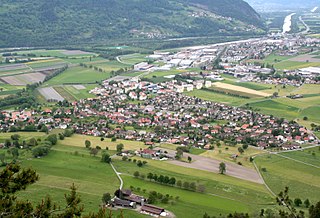
Igis(Romansh: Eigias) is a former municipality in the district of Landquart in the Swiss canton of Graubünden. Far better known than its proper name Igis is its hamlet Landquart, because of its Rail Station and motorway exit. The municipalities of Igis and Mastrils merged on 1 January 2012 into the new municipality of Landquart.

Rueun is a former municipality in the district of Surselva in the canton of Graubünden in Switzerland. On 1 January 2014 the former municipalities of Rueun, Castrisch, Ilanz, Ladir, Luven, Pitasch, Riein, Ruschein, Schnaus, Sevgein, Duvin, Pigniu and Siat merged into the new municipality of Ilanz/Glion.

Schiers is a Swiss village in the Prättigau and a municipality in the political district Prättigau/Davos Region in the canton of Graubünden. The first concrete girder bridge ever built, Salginatobel Bridge, is located in Schiers. Designed by Robert Maillart and completed in 1930, in 1991 it was the first concrete bridge to be designated an International Historic Civil Engineering Landmark by the American Society of Civil Engineers.
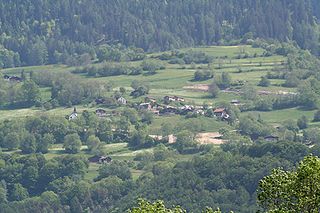
Says was a municipality in the district of Landquart in the Swiss canton of Graubünden. On 1 January 2008 the municipality was incorporated into neighboring Trimmis.

Trimmis is a municipality in the Landquart Region in the Swiss canton of Graubünden.

La Punt Chamues-ch is a municipality in the Maloja Region in the Swiss canton of Graubünden.
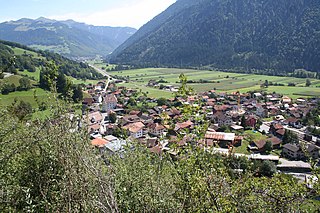
Grüsch is a Swiss village in the Prättigau and a municipality in the political district Prättigau/Davos Region in the canton of Graubünden. On 1 January 2011, the former municipalities of Fanas and Valzeina were merged with Grüsch.

Jenaz(Romansh: Gianatsch) is a Swiss village in the Prättigau and a municipality in the political district Prättigau/Davos Region in the canton of Graubünden.

Küblis or Kublis is a Swiss village in the Prättigau and a municipality in the political district Prättigau/Davos Region in the canton of Graubünden.

Seewis im Prättigau is a Swiss village in the Prättigau and a municipality in the Prättigau/Davos Region in the canton of Graubünden.

Fläsch is a municipality in the Landquart Region in the Swiss canton of Graubünden.

Haldenstein is a former municipality in the Plessur Region in the Swiss canton of Grisons. On 1 January 2021 the former municipality of Haldenstein merged into the municipality of Chur.

Jenins(Romansh: Gianin) is a municipality in the Landquart Region in the Swiss canton of Graubünden.

Untervaz is a municipality in the Landquart Region in the Swiss canton of Graubünden.
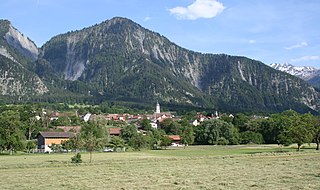
Zizers is a municipality in the Landquart Region in the Swiss canton of Graubünden. Zita of Bourbon-Parma, Empress of Austria-Hungary died in Zizers.

Cazis(Romansh: Tgazas) is a municipality in the Viamala Region in the Swiss canton of Graubünden. On 1 January 2010 the municipalities of Portein, Präz, Sarn and Tartar merged into the municipality of Cazis.

Rossa is a municipality in the Moesa Region in the canton of Graubünden in Switzerland. Its official language is Italian.

Landquart is a municipality in the Landquart Region in the Swiss canton of Graubünden. It was formed when the municipalities of Igis and Mastrils merged on 1 January 2012 into the new municipality of Landquart. The municipality "Landquart" draws its name from a locality in the former municipality of Igis.




